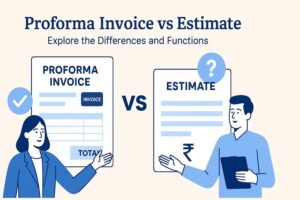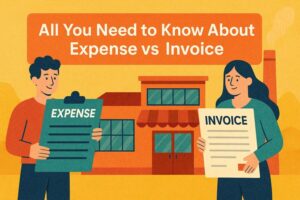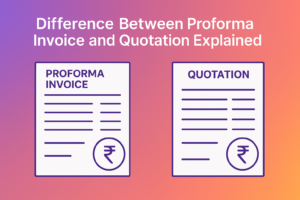Invoice Date vs Due Date: What Do They Mean in e-Invoices?
- 5 Nov 25
- 6 mins
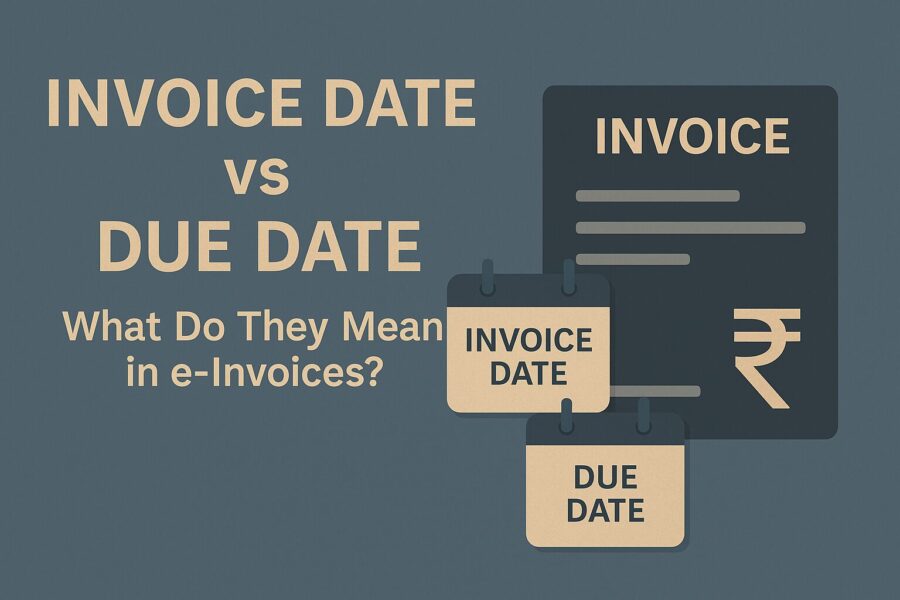
Invoice Date vs Due Date: What Do They Mean in e-Invoices?
Key Takeaways
- The invoice date marks when the transaction and billing occur, while the due date indicates when payment must be made to avoid penalties.
- From April 1, 2025, all GST-registered businesses with an annual turnover of ₹10 crore or more must upload their e-invoices to the IRP within 30 days of the invoice date or issue date.
- The invoice date determines GST liability, while the due date affects cash flow, payment cycles, and potential late payment interest.
- Terms such as Due Upon Receipt, Net 15, Net 30, Net 60, or Net 90 should align with business size, client reliability, and working capital requirements.
- Displaying the invoice due date clearly and repeatedly on invoices helps customers pay on time and reduces collection delays.
Invoice dates support every aspect of business payments, and their timely issuance helps maintain healthy customer relations. As of April 1, 2025, all GST-registered businesses having an annual aggregate turnover of ₹10 crore or more are required to upload their e-invoices on the Invoice Registration Portal (IRP) within 30 days of the invoice date or invoice issue date.
Therefore, knowing concepts such as the ‘invoice date vs due date’ is crucial for maintaining direct tax compliance, managing payment terms, and avoiding penalties. It also helps with financial planning, monitoring accounts receivable, and preparing collection strategies for outstanding invoices. Continue reading to learn more about this.
Difference Between Invoice Date and Due Date
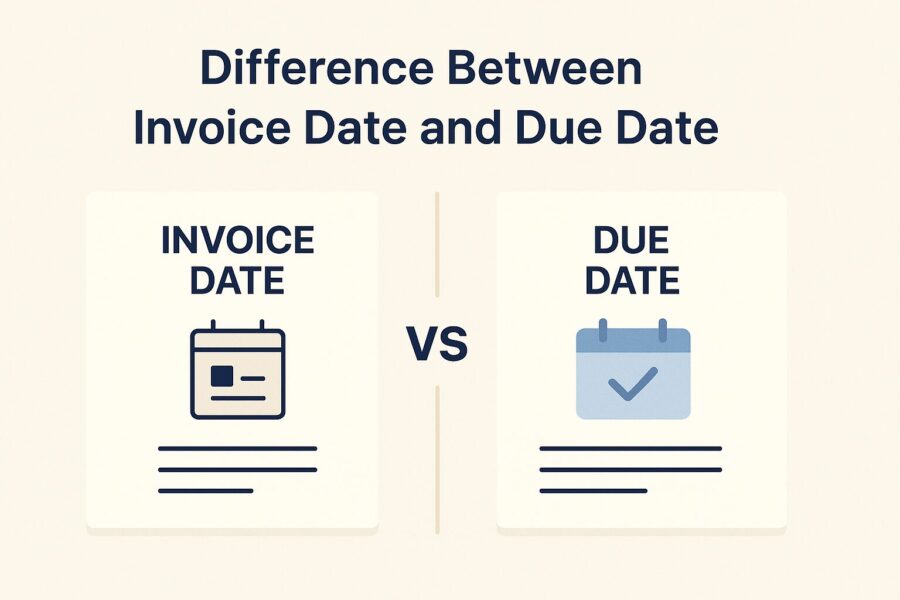
| Factor | Invoice Date | Due Date |
| Purpose of Issuance | Marks when the transaction date and billing occurred (also known as billing date or purchase order date in certain contexts). | Indicates the invoice due date or payment date to avoid penalties or late fees. |
| Legal Significance | Used to determine the time of supply for GST purposes, recording transactions in accounts, and calculating tax liability. | Critical for calculating credit period, interest on late payments, and ensuring GST payment within required timelines. |
| Impact on Taxes | GST liability arises based on the invoice date and applicable cash basis of accounting rules. | Delays beyond the payment date may attract interest or penalties under Indian regulations. |
| Mention in e-invoice | Mandatory on tax invoices as per the Indian tax laws. | Usually specified in the invoice, as it helps both parties manage payments in line with the agreed payment policy. |
How to Decide Which Due Date Suits Your Business?
How quickly you get paid by customers can be ensured by selecting the appropriate due dates for your invoices. Comparing invoice date vs due date helps determine realistic payment timelines, keeps cash flow stable, and supports working capital needs.
This decision can influence maximising EBITDA and meet funding needs, especially if your business is in a growth stage or facing financial uncertainty.
- Due Upon Receipt
It is particularly effective when you require invoice settlement immediately based upon the transaction date or purchase order date. You can set this due date on relatively small projects or when you are certain that the client will turn the project around quickly.
- Net 15
The best alternative to recurring projects using a fixed payment plan. It gives your customers time to pay whilst ensuring that you do not wait too long before making an invoice, therefore keeping invoice date ageing in control.
- Net 30
It gives your customers adequate time to cover other overhead costs and has the delivered supplies being paid on time. It is a popular option for many B2B transactions because it generally provides a good mix of flexibility and quick payment, aiding cash flow and collection efforts.
- Net 60
When high invoice amounts are involved, then net 60 terms can come in handy. You can implement this cycle while working with government agencies or large corporations, and in some cases, consider instant working capital financing to bridge the gap.
- Net 90
Although rarely used, some big clients may request a 90-day invoice due date. As this entails a long wait, you should only agree to such terms if your collection strategies are strong or if you have contingency options, such as involving a collection agency.
💡If you want to streamline your payment and make GST payments via credit, debit card or UPI, consider using the PICE App. Explore the PICE App today and take your business to new heights.
Ways to Ensure Your Invoice Due Date Stands Out on Bills and Contracts

Emphasising the invoice due date further helps to ensure there are no payment delays. Here are some techniques that you can follow to implement this:
- Ensure the payment date is clearly displayed at the top of your invoice. Otherwise, you can place it near the total invoice amount or transaction date.
- Use bold text to make the due date stand out. It is also advisable to use a single colour on the font so as not to overwhelm other components of the invoice.
- Repeat the due date more than once on the invoice. An example is that you write it in the payment terms section, just below the amount due and next to your payment policy.
With these practices, customers can find it easier to settle excellent invoices, enhance collection activities, and lessen recourse to a collection agency.
Conclusion
You can learn how to manage the problem of invoice date vs due date to enhance your e-invoicing process in order to avoid penalties, delays in payment as well as invoice date ageing in the business. Those terms are distinct and allow selling the product with ease, improve the compliance, facilitate financial planning, and maximise working capital.
Being aware of that will guide you in maximising EBITDA, financing requirements, and customer relations, and will make or break any GST-registered business in the present dynamic taxation environment.
 By
By 










